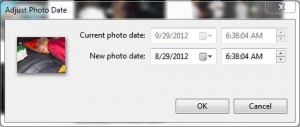This is the first blog entry for Tuxorit.com. To keep it simple, I am starting with a brief explanation of photo files, specifically JPG files. Most consumer digital cameras and smartphones produce JPG (pronounced jay-peg). JPG (wikipedia link) is short for Joint Photographic Experts Group and is simply a definition of how photographs are stored within computer files.
 A JPG file does not store every single dot in the image – instead, it approximates the image to produce smaller files. The cat here shows how the JPEG approximation works.
A JPG file does not store every single dot in the image – instead, it approximates the image to produce smaller files. The cat here shows how the JPEG approximation works.
On the right, you can see how the image is broken up into large squares that provide a granular view of the object. As you move to the right, the file uses less approximation and thus produces a more detailed image. Typically any photograph that you take yourself with a camera will use approximation effects that you are unable to detect unless zooming in as far as possible into your image – something that is rarely done, especially with consumer-grade photos.
The level of approximation is also referred to as the “compression rate”. The more compressed an image is, the more approximation is taking place.
Anyway, the JPG file contains the image, but it also contains a lot more. When you take a picture with a digital camera, information is included with the image – information about your camera settings and about the date and time your photo was taken, among other details. This is referred to as EXIF data, and it’s simply appended to the image and included in the JPG file. This is great, because it means that the file will always contain that info.
Meta-Data and Dates for Photo Files
Some photo organizer software, such as Picasa, Adobe Photoshop, and others allow you to change this embedded information (referred to as meta-data since it is in addition to the primary image data) . Say you took a picture with your camera and then the computer told you that the picture was taken in October of 2002. Well, that simply means you didn’t set the clock in your camera. But you can fix the date and time in the photo file using a computer program. And those changes will get incorporated into the photo file, and retained with the file forever.
I often scan old photos, and the date and time are simply the date and time that I ran the photo through the scanner. That is never going to be the correct date and time that the picture was taken, though, so I use software to update the information. Most programs require you to specify a year, month, and date in order to date a photo.

Adobe Photoshop is unique in that you can date a photograph with as much information as you’ve got – for instance, “1972” or “March, 1986”.
I like that feature a great deal, since I don’t like adding information to a file unless I know it is correct. Often I can figure out the year of a photo at a minimum, but I have no idea what month and day it was taken. And I don’t like making it up or simply selecting the first of a random month.
Adobe Photoshop cannot store this new date and time information in the photo’s EXIF information, however, since the EXIF standard requires a complete date composed of a year, month, and day. Adobe solves this problem by adding yet another chunk of data (in what they call “Adobe XML” format) inside the EXIF data within the file. The problem is that currently most non-Adobe programs do not make use of this Adobe-specific information. Adobe recognizes that others don’t use their dates, so they store the date also in the typical EXIF format that includes a month and day to approximate the intended date. The result – a photo I labeled as “May, 1967” in Photoshop shows up as April 29, 1967 in Picasa and Windows and iPhoto. This is unfortunate, and I sincerely hope that the standards evolve in future years and that companies cooperate to produce a standard way of representing partial dates. I do not understand why a major industry player like Adobe would produce an enhancement to the way photos are dated, only still to be ignored by other major players who are supporting the original, simple EXIF standard. (This is similar to music – where embedded star ratings for songs are handled differently by iTunes and everyone else – why can’t we all just get along?)
Google Picasa here requires me to enter a year, month, and date whether I know them or not! There’s no way for me to say “April, 2012 but actual date uncertain”. 